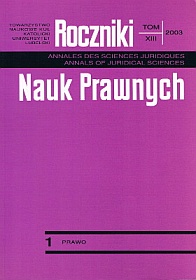Contemporary Interpretations of the French Conception of the Laic State
Abstract
In France the model of the laic state has been based on two sources of extremely liberal ideology and political fight against absolute monarchy that was exceedingly connected with the Catholic Church. This laity is characterized by hostility against religious institutions, and especially against the Catholic Church. After the coup d'ètat carried out by Napoleon Bonaparte a period of relative stabilization followed. At the beginning of the 20th century the war against the Church was resumed. The law of December 9, 1905 about separation of Churches from the state depraved the Catholic Church, the Protestant Church and the denominational association of the Judaic faith of an official character. After World War II this hostile policy of the State has been mitigated. Although the law of 1905 is still binding, its interpretation and application have been changed. The aim of the article is to point to the evolution of the notion of laity, understood as separation, then as neutrality, and to the present attempt at interpreting the rule as liberty. Taking into consideration the regulations by law of the laity of the state it should be stated that they have not been changed since the middle of the 20th century, but an evolution in a good direction has taken place in their understanding. This does not mean that the discussion on interpretation of this rule has been completed. The tendencies are still strong to give a negative, hostile towards religion, meaning to the laity of the state. It should be expected then that the French legislator will change the understanding of this rule, in this way concluding the controversies often leading to serious political tensions.
Copyright (c) 2003 Roczniki Nauk Prawnych

This work is licensed under a Creative Commons Attribution-NonCommercial-NoDerivatives 4.0 International License.


